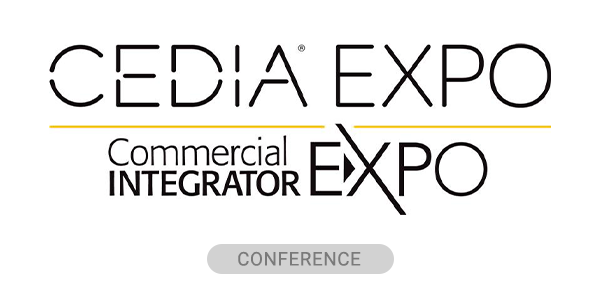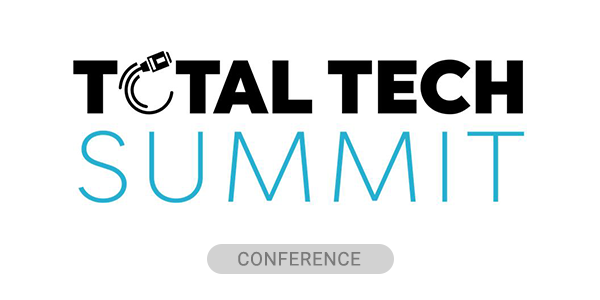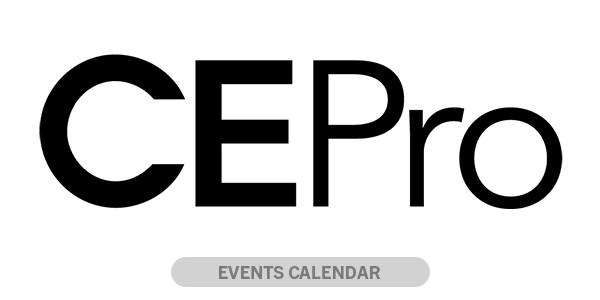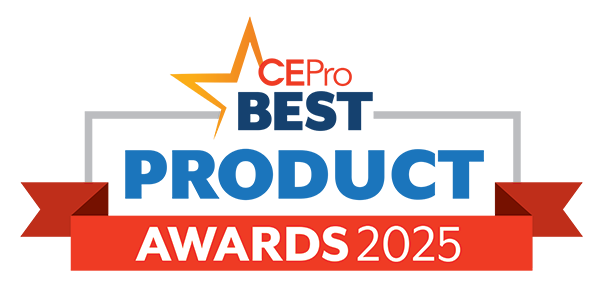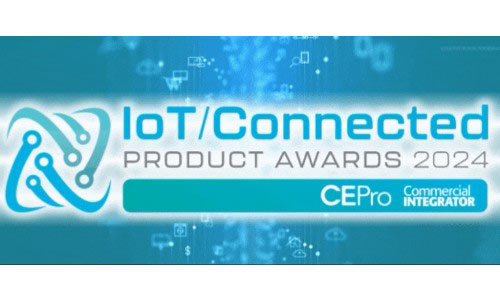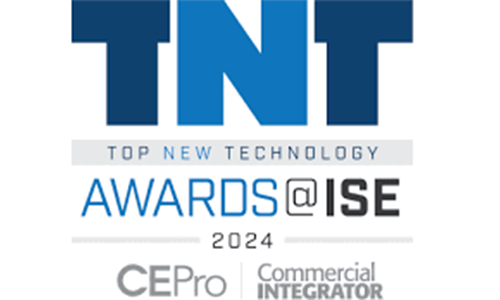As the custom integration industry navigates economic uncertainty, workforce gaps and evolving technologies, CEDIA Global President and CEO Daryl Friedman is steering the association toward a future where integrators are recognized as indispensable partners across the home design and construction ecosystem. Since taking on the role in late 2021, Friedman has focused on redefining CEDIA’s identity and emphasizing its core mission of advocacy, connection, and education.
The organization has been active in advocating for beneficial legislation at the state and federal levels, works to solve workforce development issues and continues to improve upon the U.S. custom integration industry’s premiere tradeshow CEDIA Expo.
In this wide-ranging interview leading up to CEDIA Expo 2025 in Denver, Colo., Friedman speaks about leading the industry group, working with lawmakers on Capitol Hill, increasing industry awareness and solving issues inherent in a niche trade like custom integration.
A Reimagined CEDIA Expo Education Program
At this year’s CEDIA Expo—taking place September 3–6 in Denver—attendees can expect an expanded educational offering curated by Amanda Wildman. The conference features focused tracks in business development, technical training, design/build collaboration, and future technologies. Notable sessions include “Creating a Culture that Rocks!,” “Lessons Learned from the Trenches,” “Invisible Innovation,” and “Robotics in the Home…Today!”
“Lighting and shading remain huge,” Friedman says, “but we’re also leaning into power management and energy sustainability—things like whole-home energy ecosystems, EV charging, and battery backup systems.”
New this year are courses designed specifically to bridge gaps between trades. The “Design + Connection” sessions include “Lessons from a Frank Lloyd Wright Home,” which explores integrating technology into historically significant architecture, and “Technology Can Be Beautiful,” a design-focused panel highlighting products that blend seamlessly into high-end residential environments.
These sessions align with Friedman’s broader push to bring integrators into the design conversation from the beginning of a project, not at the end.
CEDIA Expo 2025 will also see increased emphasis on robotics, artificial intelligence, and sustainability. Forward-looking classes such as “The Latest on A.I.” and “Be Powerful: Power Management & Storage” offer integrators a look at what’s next—and how to capitalize on it now.
“We’re not just reacting to trends,” Friedman says. “We’re preparing our members to lead them.”
Friedman also points to the return of Manufacturer Product Training sessions as a critical piece of the Expo’s value proposition. These hands-on, brand-led sessions go beyond product demos to cover installation best practices, system design, and revenue opportunities for integrators who want to stay ahead of evolving technology stacks.
The show floor will feature dedicated spaces for lighting, power management, networking, and control systems, reflecting demand for integrated solutions that span multiple technology categories. Demonstration zones will highlight emerging categories such as aging-in-place technologies, voice interfaces, and sensor-driven automation platforms.
Outside the classroom, CEDIA Expo 2025 will include the association’s annual Town Hall, where Friedman will be joined by NKBA CEO Bill Darcy to present findings from a new study on integrator-designer collaboration. The Day of Discovery, produced in partnership with Technology Designer Magazine, returns with curated tours for interior designers and architects who want to better understand the value of working with integrators.
The event will also spotlight achievements across the industry. CE Pro’s Home of the Year Awards and BEST Product Awards will celebrate standout installations and products, respectively. The Women in Consumer Technology Legacy Awards will honor leading female voices in the channel. A special Career Day aims to connect students and job seekers with integrators and manufacturers, reinforcing the association’s long-term workforce development goals.
Another growing theme Friedman points to is “resimercial” integration. As more integrators work in light commercial spaces—retail stores, restaurants, boutique offices—CEDIA is providing crossover education and resources to help residential firms build confidence and capability in this hybrid space. The co-location with Commercial Integrator Expo supports this goal and will feature case studies, best practices, and new product categories geared toward multi-use environments.
“Integrators are doing more than ever before,” Friedman says. “Whether it’s a penthouse, a coworking space, or a wellness retreat, our members are expected to deliver high-performance systems that are reliable, beautiful, and intuitive.”
Redefining CEDIA’s Identity Beyond the Expo
One of Friedman’s top priorities has been clarifying the association’s value beyond CEDIA Expo, which the organization sold in 2017 to Emerald, CE Pro’s parent company.
“A lot of people thought CEDIA was just the trade show,” Friedman explains. “I’ve worked hard to clarify that we are the industry’s indispensable association.”
This includes remaining active in state regulatory issues like ensuring low-voltage professionals can pull wire without an electrician’s license but also building relationships in Washington, D.C. to secure broader support for the industry.
There is perhaps no better way than to make CEDIA an “indispensable” industry association than by working to solve one of the nagging challenges that plagues many integrators: workforce development.
A key milestone in that work has been the association’s lobbying in favor of the Freedom to Invest in Tomorrow’s Workforce Act, which would allow families to use 529 savings plans for technical training and certifications–including those offered by CEDIA. Those efforts recently came to fruition through the passing of the bill into law.
Tariffs are of course another top-of-mind issue for integrators, and Friedman says CEDIA is taking a two-pronged approach. The association is both lobbying for product-specific exclusions and helping members adapt to pricing volatility. CEDIA hosted a webinar in the wake of recent tariff announcements to educate members and released suggested legal language that integrators can include in client contracts to account for fluctuating costs.
“That’s the kind of member support we’re really focused on,” Friedman says.
Building Industry Legitimacy Through Labor Recognition
Much of CEDIA’s recent advocacy work could essentially be explained as marketing the industry to prospective newcomers, entry-level workers and entrepreneurs. Explaining to the outside world what an integrator does is easier said than done, but it’s a challenge that CEDIA is taking upon itself.
The organization continues to build strategic partnerships with other associations and expand its reach to audiences who may never have heard the term “custom integrator.” In fact, CEDIA is even leading an effort to have “technology integrator” recognized an official U.S. Department of Labor occupation.
Current classifications lump integrators under electricians or telecom technicians, which Friedman argues is outdated and misrepresents the scope of the work. The review process only happens once every 10 years, and CEDIA has submitted its case during the current cycle. If successful, this reclassification could unlock significant funding opportunities and elevate the profile of the profession among educators and job seekers.
“We have to be a real industry, and we have to be established,” Friedman says, adding that even this seemingly innocuous advocacy work could have a big impact on workforce development.
Recently, the organization has improved its online presence and launched the CEDIA Foundation and its flagship “100 Techs in 100 Days” initiative that aims to provide newcomers with free certification training and connection with integrator employers.
If the pilot program is a success, CEDIA will look to expand that figure.
“Hopefully it’s 10,000 in the future,” Friedman says.
The goal of the CEDIA Foundation and 100 Techs in 100 Days program isn’t just to educate—it’s to build long-term awareness of the profession.
“It’s the old saying—‘you can’t be what you can’t see,’” Friedman adds. “There are people who would love this work and are great at it, but they’ve just never heard of it.”
“If a young person who’s trying to decide what they want to do doesn’t know our industry exists, they’re obviously not going to join us,” Friedman says. “We have to go out and do that.”
Elevating the Custom Integration Channel Through Advocacy
One of Friedman’s central goals is to elevate the custom integration channel to the same level of recognition as other trades involved in the home construction and design process.
“Our major strategy for the next couple of years is to continue this work to make CEDIA—the CEDIA industry—an equal partner to the other trades,” Friedman says. “For decades, CEDIA has been not considered at the same level as the home builder, the architect, the designer, etc. And that needs to change.”
He emphasizes that CEDIA’s awareness campaigns, government lobbying, and professional outreach efforts are all geared toward this goal: “recognizing this industry as an equal trade, who needs to be at the table on day one of a project, and considered not as a subcontract, but as a true partner in the process.”
To achieve this, Friedman has been building relationships with leaders of related trade organizations, including the National Association of Home Builders (NAHB), the National Kitchen & Bath Association (NKBA), the American Society of Interior Designers (ASID), and the American Institute of Architects (AIA).
“All these other associations are gonna help us scale this,” he says. “Now, individual integrators are doing great work… but we need to scale that for our entire industry.”
As part of this cross-industry collaboration, CEDIA is working with the NKBA on a joint study aimed at strengthening the relationship between integrators and interior designers.
“That’s why I’m talking to those CEOs of those associations—to make sure that everyone can be educated,” Friedman explains.

